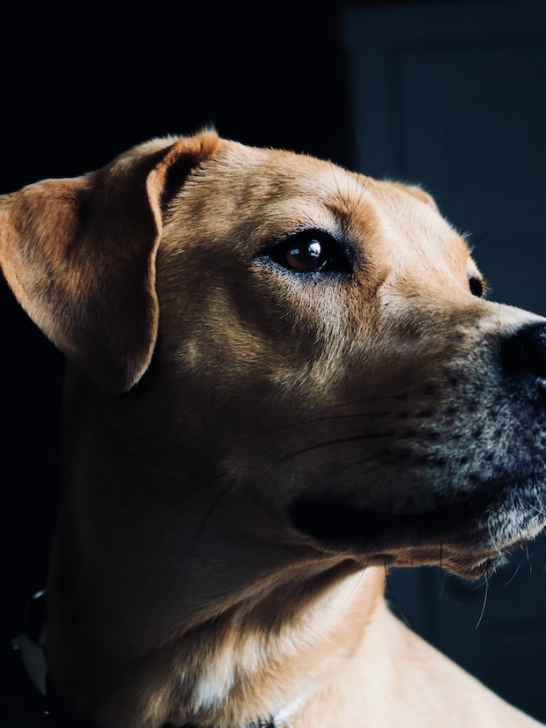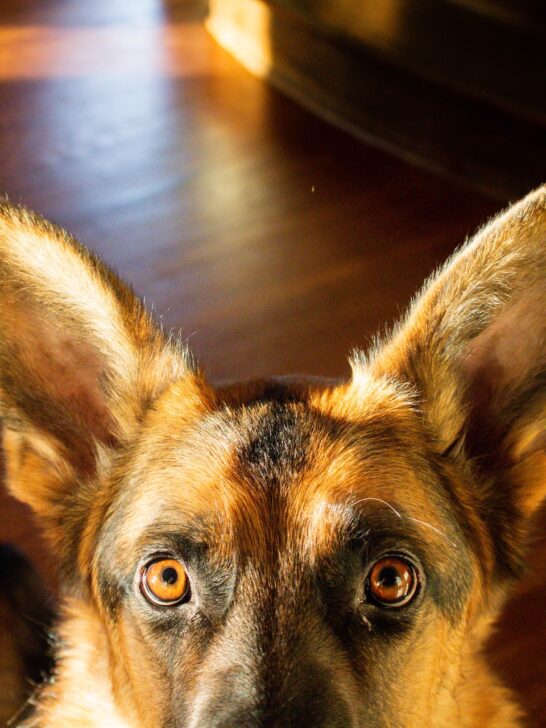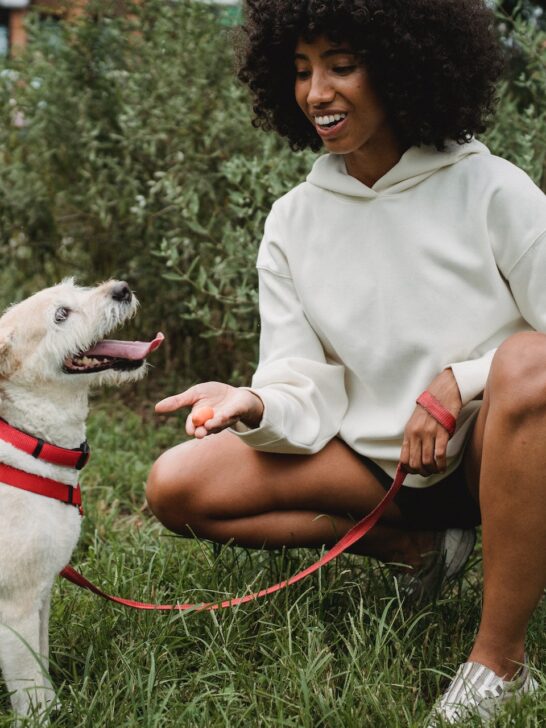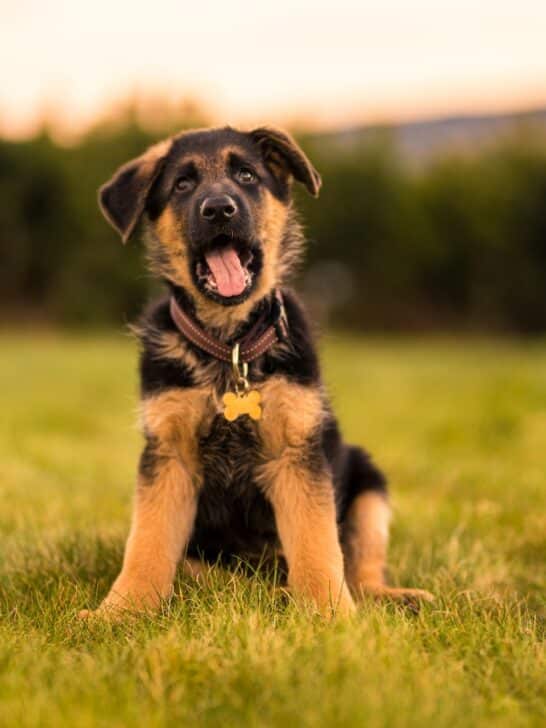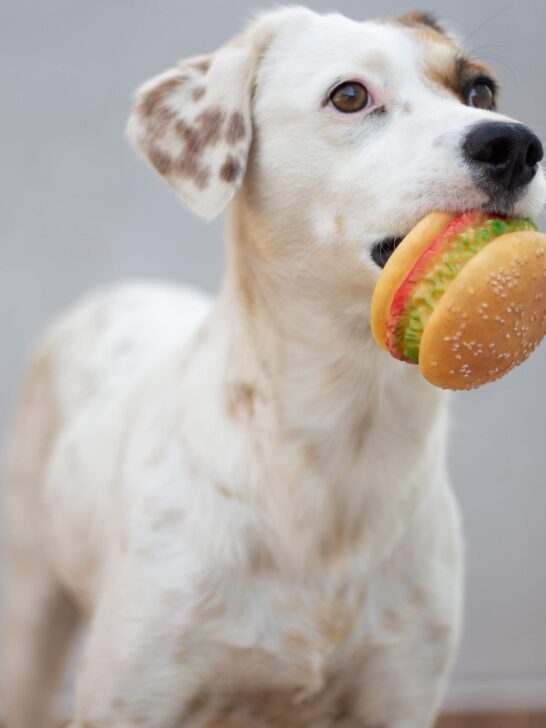The Amazing Heat Tolerance of German Shepherds
The German Shepherd is a loyal breed with a medium-length, double coat consisting of a dense close-lying overcoat and a soft undercoat.
However, if you’re looking to adopt a GSD you might be curious to know: Do German Shepherds have a high heat tolerance? And what temperature is too hot for a German Shepherd?
In this article, I cover some key information about German Shepherds, including how they cope in hot weather.
German Shepherds are an adaptable breed. Once acclimated, they can do perfectly well in hot climates.
That being said, you need to provide a German Shepherd with the appropriate amount of shade, shelter, and water for them to thrive.
Keep reading to find out more.
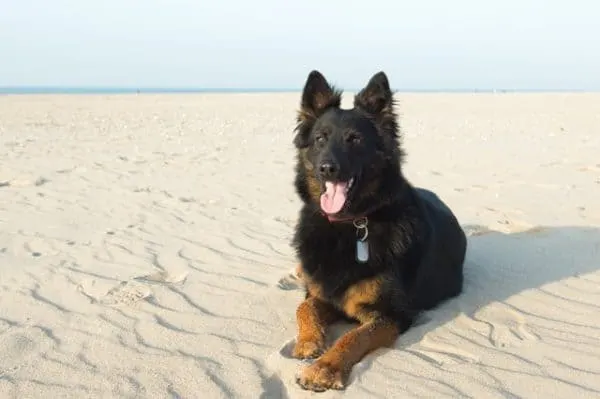
German Shepherd heat tolerance
The most important rule that you need to pay close attention to if your dog is in hot weather is to ensure that they are drinking enough water to stay hydrated throughout the day.
Dehydration can be fatal to dogs, so it’s important to monitor how much water your German Shepherd is drinking.
During the summer season, your dog is at risk of getting a heat stroke, especially for the people who keep their dogs outdoors.
As each dog has individual requirements, it’s always a good idea to ask your veterinarian how much water your dog should be drinking on a daily basis.
Signs of overheating and dehydration in your dog include:
- Loss of skin elasticity
- Loss of appetite
- Thick saliva
- Heavy panting
- Vomiting
- Diarrhea
- Lethargy
- A dry nose and gums
If you suspect that your dog is dehydrated, then you need to take your dog to the veterinarian immediately.
Dehydration can be lethal if your dog is left unattended for too long, so medical intervention at this stage is critical to avoid a potentially life-threatening issue.
Heatstroke is another concern you’ll need to be aware of. Signs of heatstroke include but are not limited to:
- Excessive panting – German Shepherds don’t have difficulty breathing usually. This is one of the most common signs that your dog is experiencing heat stroke.
- Lethargy or weakness – If your dog is much more tired than he usually is, it’s a clear sign that they’ve had too much sun.
- Seizures, vomiting, or bloody stools – If you see your dog experiencing any of these symptoms, they could be suffering from heatstroke.
- Excessive drooling and foaming at the mouth – German Shepherds aren’t generally associated with excessive drooling. If your dog is suddenly drooling a lot and they’ve been out in the sun, it could be a bigger issue at fault.
Monitoring your dog’s hydration levels can be tricky when you’re out at work during the day. So, what are some of the ways you can test if your dog is dehydrated?
Loss of skin elasticity is the easiest sign to test for dehydration in your dog. To test for it, gently hold some of the dog’s skin near his shoulder blades, raise it up, and then let it go.
Watch carefully as the skin falls back into place. If your dog is well hydrated, the skin will instantly spring back to its original position.
However, if your dog is dehydrated, on the other hand, the skin will take longer to fall back into place.
Another test is to check your dog’s gums to feel whether they’re sticky and dry, and while you’re doing that, test for capillary refill time.
Press your finger gently against your dog’s gums and then remove it.
In a well-hydrated dog, the area where you pressed will appear white for a second and then return to its normal pink color almost immediately. In dehydrated dogs, the capillary refill time takes much longer.
How to prevent dehydration in German Shepherds
Now that I’ve established German Shepherds can live in hot weather, below are some tips on how to prevent dehydration in your dog:
Stay indoors
Like humans become too hot outdoors, your furry friend is no exception.
To prevent your dog from becoming dehydrated, allowing your dog to stay indoors with you in a cool or air-conditioned room is essential on extremely hot days.
While dogs like to lay outside and nap in the sun, you shouldn’t allow them to become overheated or stay out there for too long.
It is your responsibility to ensure that they don’t become dehydrated or overheated by allowing them inside during the hottest periods of the day.
This will mean that they are as safe and as comfortable as possible during the summer months.
Avoid walking during peak heat hours
A good way to prevent dehydration in your dog is to avoid walking during peak heat hours, extending from 12 PM to 3 PM.
In the blistering hot summer, the ground and pavement become hotter as the temperatures rise.
This can lead to a variety of issues, including your dog burning their paws and becoming dehydrated if you walk them during peak heat hours.
You can safely take him out for a walk after the sun has started to settle, and the heat has begun to disperse.
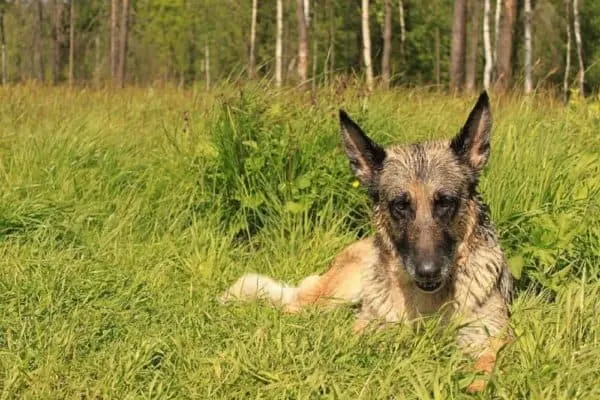
Providing fresh, cold water
Your dog should always have access to fresh water no matter what the season is, however, it is especially important throughout the summer months.
As the temperature outdoors can rise drastically, your dog can become dehydrated much more quickly.
As a result, it is essential that you provide your German Shepherd with fresh, cold water to ensure that he stays as hydrated and happy as possible.
This is especially true when you know that you’re going to be out for the day, or you’re out on a hike in the hot weather.
Making sure that you bring a travel dog bowl to provide them with water is absolutely crucial to their health.
Depending on the weather, temperature, and the activity level and exercise of your dog, he will probably need more water on some days than others.
Your veterinarian can offer advice about how best to ensure your dog consumes enough fluids, based on his age, weight, and condition.
You will also need to be mindful of the fact that dogs can accidentally spill their water bowls. This can be problematic when you’re out for the day, as they will need access to their water to remain hydrated.
As a result, investing in a non-spill bowl for your dog is a good solution. To keep the water chilled, you can also try adding ice to the water.
Understanding the importance of providing your dogs with easy access to fresh water and knowing the signs of dehydration can help prevent dehydration and recognize the signs before it becomes dangerous.
Buy a no-spill dog bowl here: Kurgo Splash Free Wander Water Bowl, No Spill Dog Travel Bowl
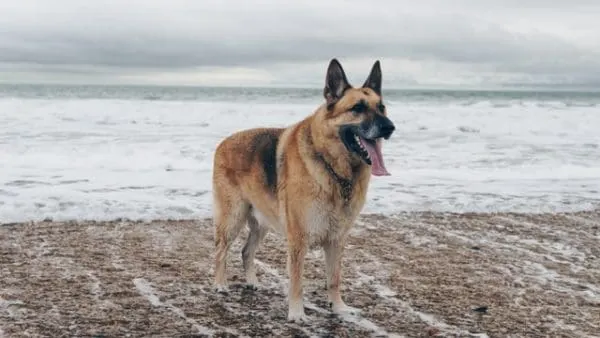
Provide them with sufficient shade
As the ground temperature can rise drastically in hot weather and direct sunlight will also take a toll on your furry friend.
As a result, you need to provide your pup with sufficient shade.
Shaded areas can include encouraging them to sit under a tree or setting up their water bowl somewhere with cool shade and cold ground where your dog can sit and rest.
If no shaded area is available in your backyard, then you will need to invest in an umbrella to shade your dog.
In addition to this, you might find that your dog needs to be monitored and spend more time indoors to prevent them from overheating.
What temperature is too hot for a German Shepherd?
Generally speaking, anything above 95 degrees Fahrenheit is too hot for your German Shepherd.
However, this temperature tolerance could differ between dogs, meaning that this number could be significantly lower.
So, if it’s a particularly hot day, make sure you’re not pushing your dog to their limits, and keep them indoors and in the shade as much as possible.
Related Reading: German Shepherd Cold Tolerance
For more on German Shepherds and hot weather, feel free to check out this video!
























